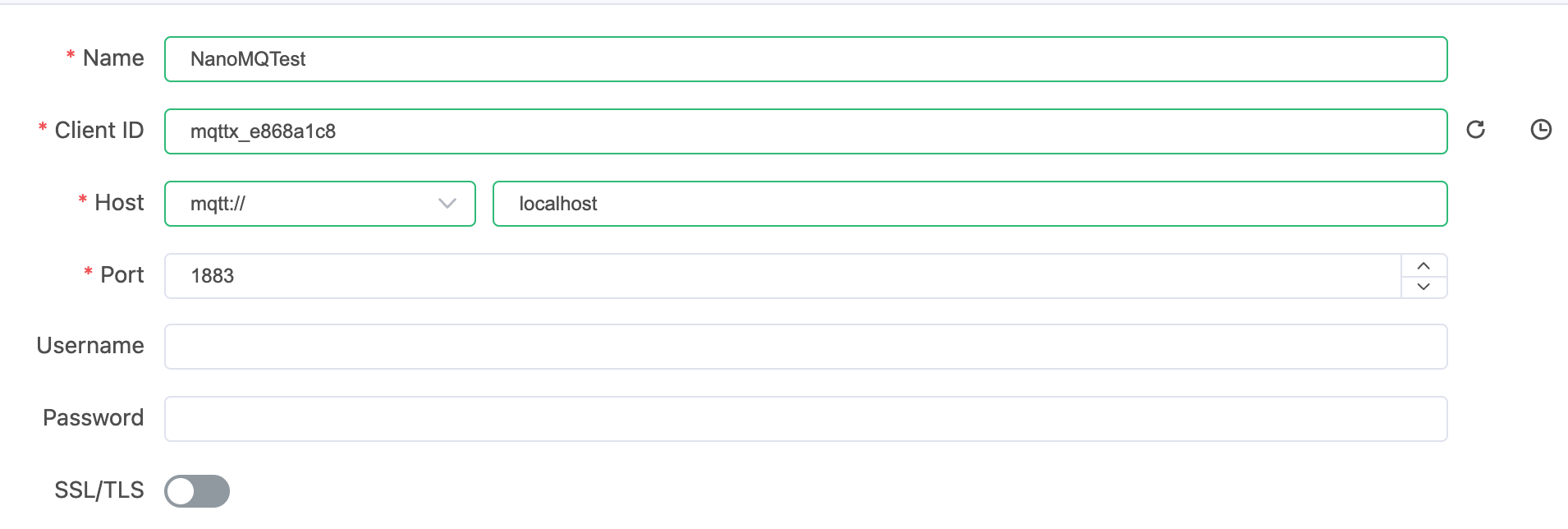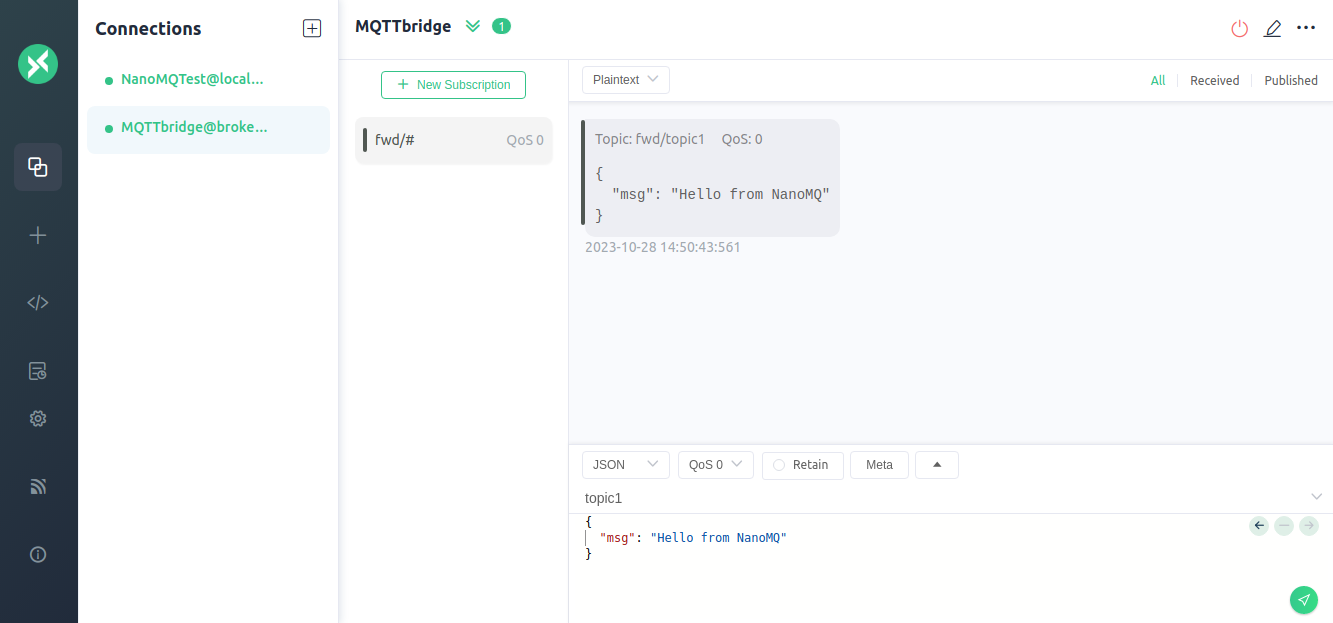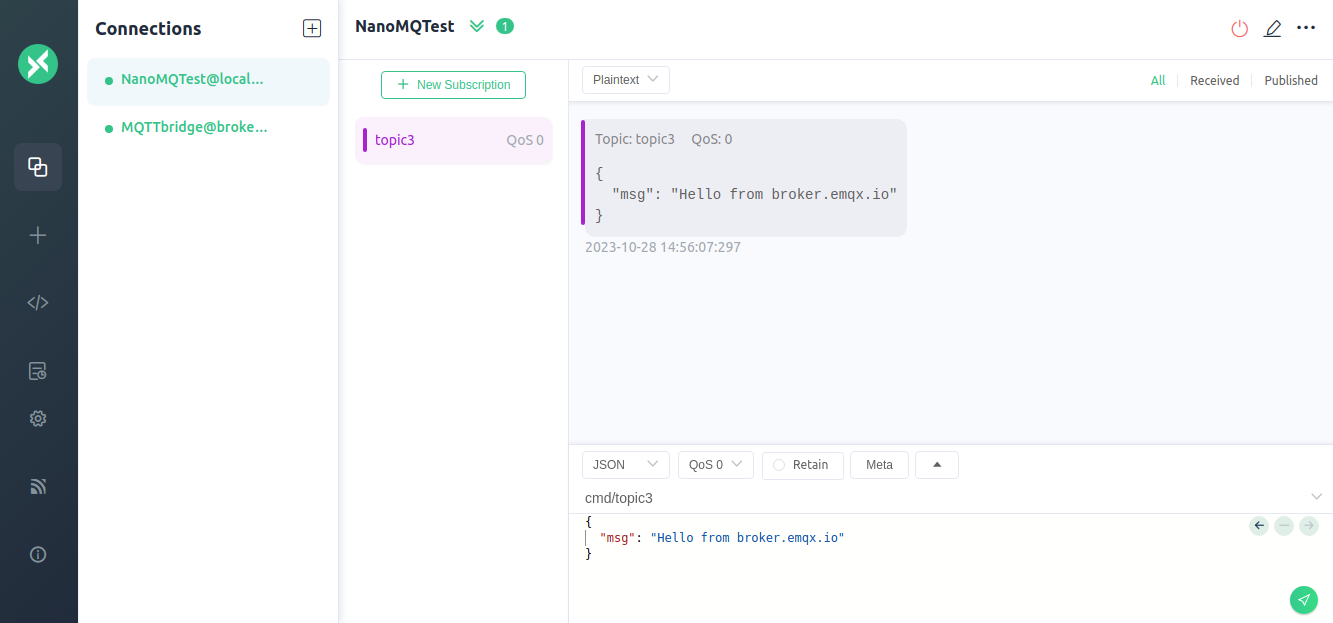MQTT over TCP Bridge
MQTT over TCP Bridging serves as a reliable communication strategy, leveraging the trustworthiness of the Transmission Control Protocol (TCP) to ensure the accuracy and integrity of MQTT messages during cross-network or cross-proxy communications. With the flexibility to adapt to various network environments and application scenarios, it plays a pivotal role in facilitating communication between Internet of Things (IoT) devices.
NanoMQ now supports MQTT over TCP bridging, enabling connections to the EMQX Enterprise MQTT IoT Access Platform.
Configure MQTT over TCP Bridge
NanoMQ comes with built-in support for MQTT over TCP bridging. Thus, after installing NanoMQ through any given method, you can immediately configure and enable MQTT over TCP bridging via the configuration file.
This section utilizes EMQ's free public bridge broker.emqx.io:1883 to establish MQTT over TCP data bridging. Insert the following content (in HOCON format) into the configuration file:
Key Configuration Items
- Remote broker address:
bridges.mqtt.name.server - Array of remote topics to forward (supporting MQTT wildcard):
bridges.mqtt.name.forwards - Array of remote topics to subscribe to (supporting MQTT wildcard):
bridges.mqtt.name.subscription
If using Hocon version configuration items and NanoMQ version >= 0.19, you can either directly write the related configurations into nanomq.conf, or create a separate configuration file for bridging, such as nanomq_bridge.conf, and use HOCON's include syntax to reference this file in nanomq.conf:
Example:
include "path/to/nanomq_bridge.conf"To view more log data during runtime, you can set the log level log.level in the configuration file.
Start NanoMQ
When launching NanoMQ, use the --conf command line option to specify the path to the configuration file (If the configuration file is already located in the system path /etc/nanomq.conf, there's no need to specify it in the command line).
TIP
If you enabled SQLite feature, NanoMQ will automatically flush cached messages into disk when network is disconnected. NanoMQ will resend cached messages once bridging connection is restored. But each cached message will be resent in a certain interval to avoid bandwidth exhaustion.
Test the Bridge
This section will guide you in testing the newly established MQTT data bridge using the MQTTX Client Tool. We will create two connections, one to NanoMQ and the other to the MQTT data bridge, to verify the message sending and receiving services of both NanoMQ and the data bridge.
Client connecting NanoMQ

Client connecting MQTT bridge

Verify messages are forwarded from NanoMQ to MQTT bridge
On your client connecting the MQTT bridge, MQTTbridge in this example, subscribe to the fwd/# topic.
On your client connecting NanoMQ, NanoMQTest in this example, publish a message to the topic1 topic, for example, Hello from NanoMQ
Verify that you received the message that was published from the local broker.

Verify subscribed messages are received by NanoMQ from MQTT bridge
On your client connecting NanoMQ, NanoMQTest in this example, subscribe to the topic3 topic.
On your client connecting the MQTT bridge, MQTTbridge in this example, publish a message to the cmd/topic3 topic, for example, Hello from broker.emqx.io
Verify that you received the message that was published from broker.emqx.io.

If you're interested in evaluating the performance of MQTT over QUIC bridging, you can conduct a benchmark test. Please refer to the guide available at Toolkit - Bench for detailed instructions.